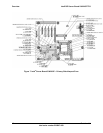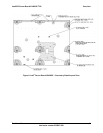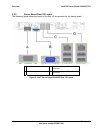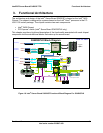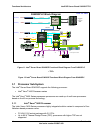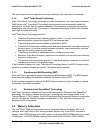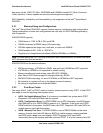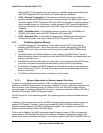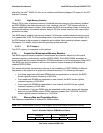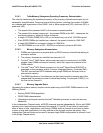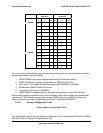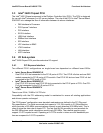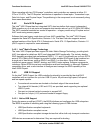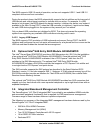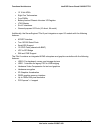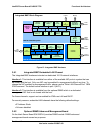
Functional Architecture IntelP®P Server Board S3420GP TPS
offered by the Intel
®
S3420 I/O Hub and a variably-sized Memory Mapped I/O region for the PCI
Express* functions.
3.2.3.2 High-Memory Reclaim
When 4 GB or more o
f physical memory is installed (physical memory is the memory installed
3 DIMM mory is lost. However, the Intel
®
3420 chipset provides a
called , which allows the BIOS and operating system to remap the
y the
The BIOS always enables high-memory reclaim if it discovers installed physical memory equal
to or greater than 4 GB. For the operating system, the reclaimed memory is recoverable only if
the
this feature. For details, see the relevant operating system manuals.
Onl C
xed-speed Memory Modules
ertises its
lowest supported clock speed through the TCKMIN parameter in its Serial-presence Data (SPD).
The BIOS uses this information to arrive at the common lowest frequency that satisfies all
inst e
Thi e
equencies in the system for a given user-selected frequency. The following rules apply:
If all three single-rank/dual-rank RDIMM slots are populated on a channel, the BIOS
lated on one channel, the BIOS forces a global
z, the BIOS
forces a global common frequency of 1333 MHz.
The following nomenclature is followed for DIMM sockets:
as DDR s), the reserved me
feature high-memory reclaim
lost physical memory into system memory above 4 GB (the system memory is the memor
processor can see).
PAE feature in the processor is supported and enabled. Most operating systems support
3.2.3.3 ECC Support
y E C memory is supported on this platform.
3.2.4 Support for Mi
The BIOS supports memory modules of mixed speed by automatic selection of the lowest
common frequency of all memory modules (DDR3 DIMM). Each DDR3 DIMM adv
all d DDR3 DIMMs.
s s ction describes the expected outcome on the installation of DDR3 DIMMs of different
fr
forces a global common frequency of 800 MHz.
If two quad-rank RDIMM are popu
common frequency of 800 MHz.
If one quad-rank RDIMM are populated on one channel, the BIOS forces a global
common frequency of 1066 MHz.
If a maximum of only two DIMM slots are populated in the system among all channels
and one or more DIMMs support DDR3 frequency greater than 1333 MH
3.2.5 Memory Map and Population Rules
Note: Intel
®
Server Board S3420GP may support up to three DIMM sockets per channel.
Table 3. Standard Platform DIMM Nomenclature
Channel A Channel B
A1 A2 A3 B1 B2 B3
Revision 1.0
Intel order number E65697-003
18



